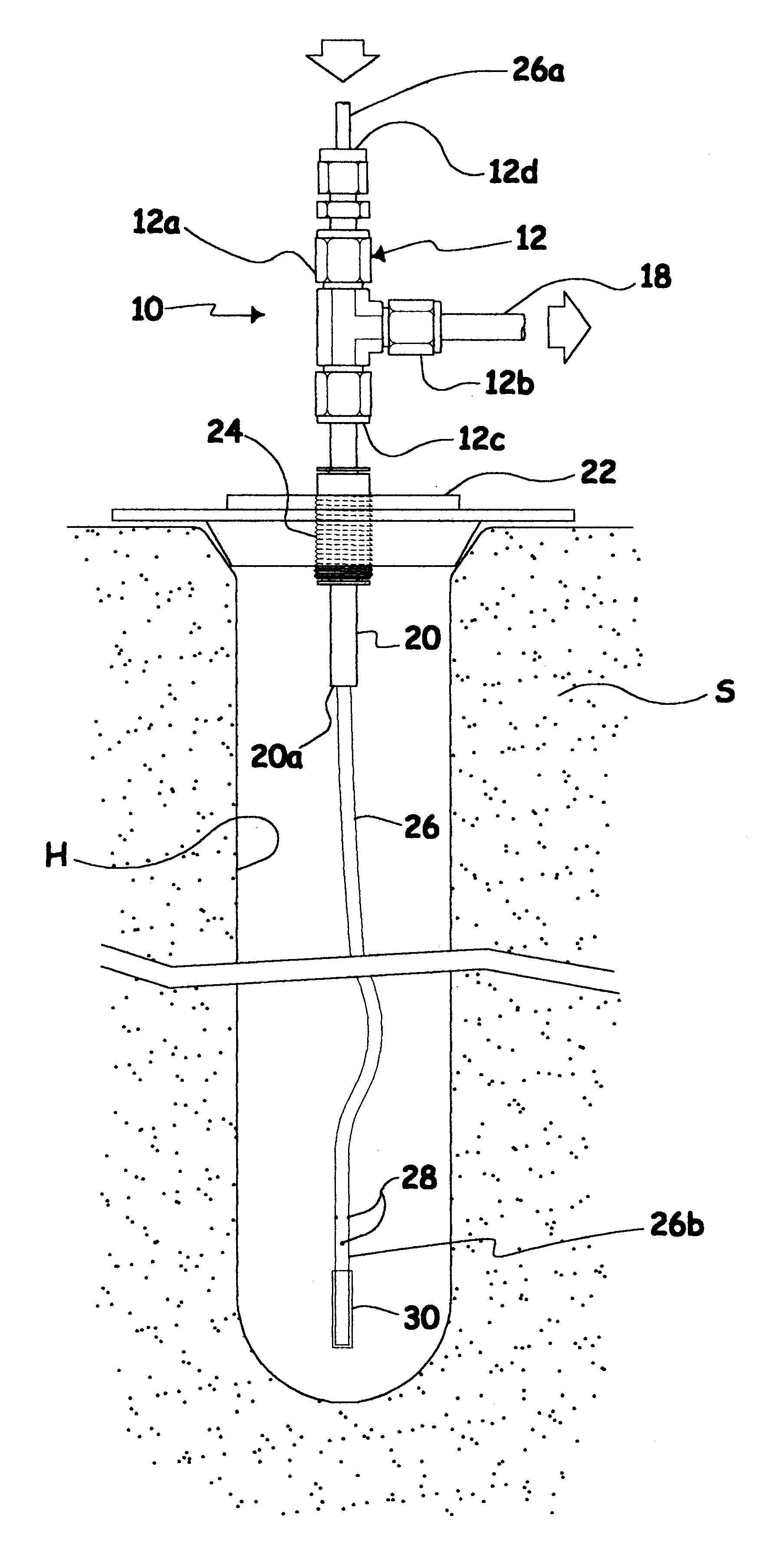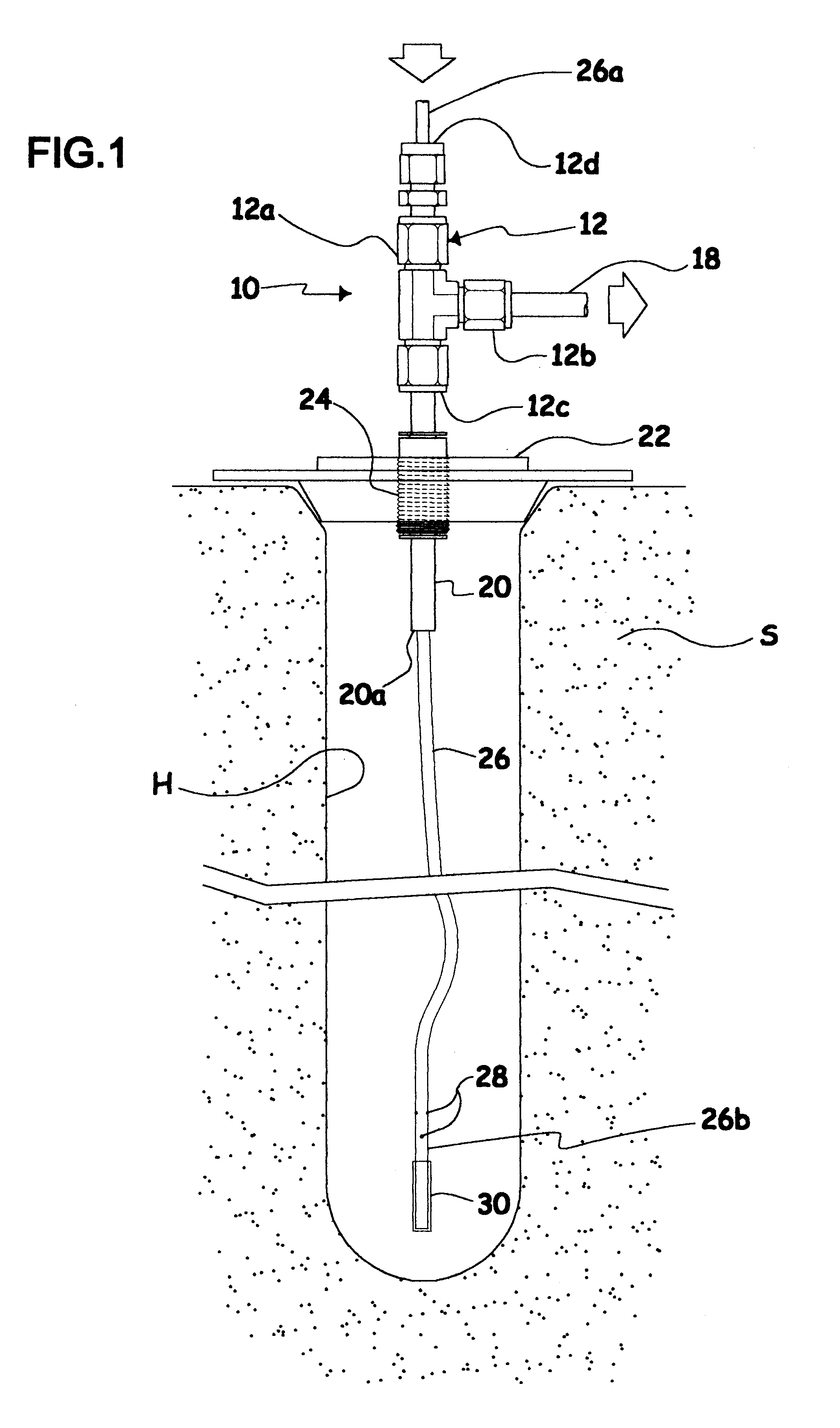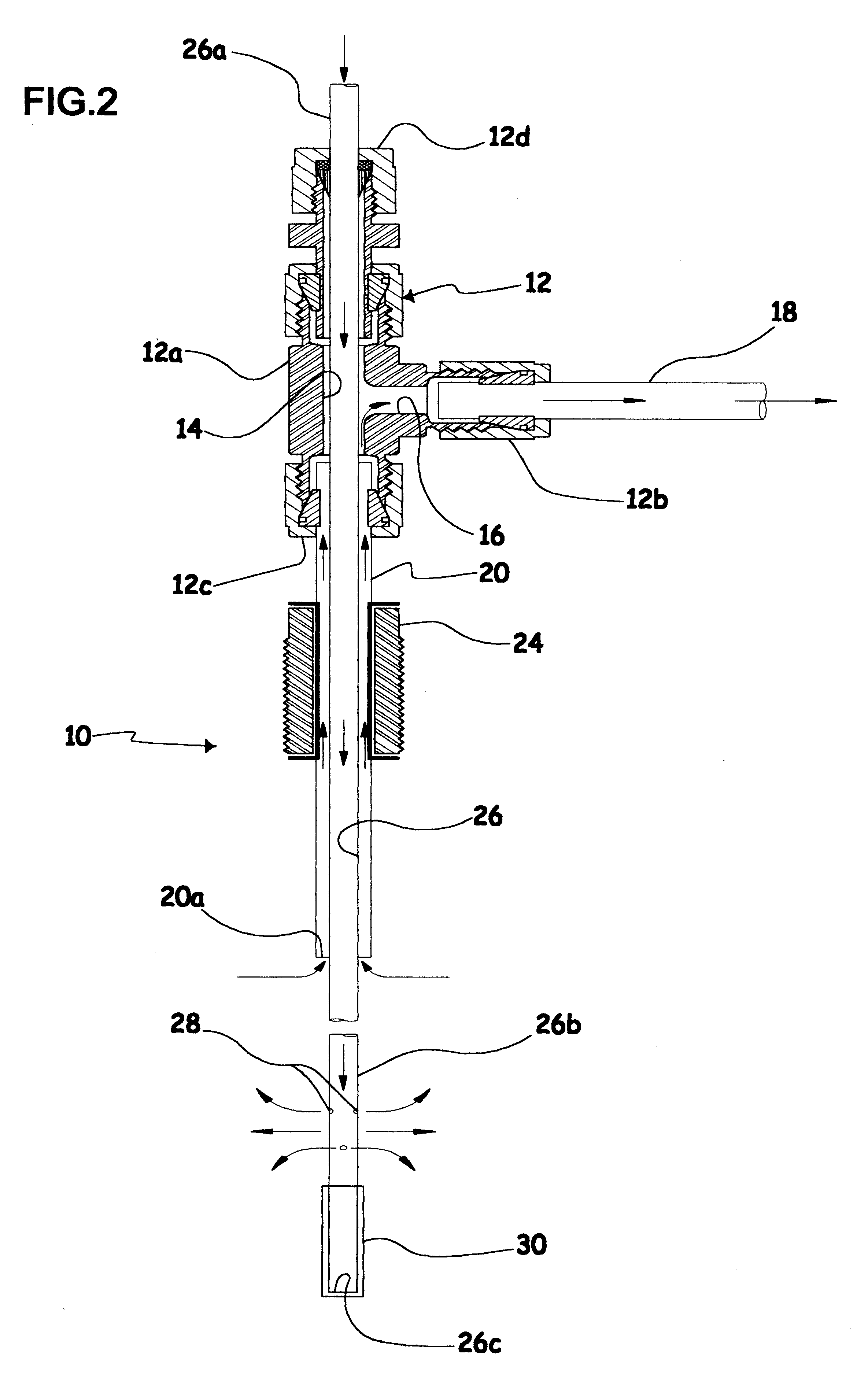Method for testing soil contamination, and probe therefor
a soil contamination and probe technology, applied in the direction of geological measurements, extracting sample devices, underground/near-surface gas detection, etc., can solve the problem of fluid pressure differential in the soil, local increase of the quantity of fluid near the probe tip, and contaminant fluids being prone to migrate in the soil
- Summary
- Abstract
- Description
- Claims
- Application Information
AI Technical Summary
Benefits of technology
Problems solved by technology
Method used
Image
Examples
first embodiment
FIG. 1 shows an upwardly open ground cavity or hole H made in porous soil S in which a probe 10 used to carry out the method according to the present invention has been partly inserted. The hole H may have been made in any appropriate manner, e.g. with an auger. FIGS. 1 and 2 show that probe 10 comprises a rigid hollow T-adaptor 12 similar to the one described in the parent '888 application and which includes a vertical main body 12a and a transversely projecting side arm 12b. A first inner conduit 14 vertically extends in the T-adaptor main body 12a, and a second transverse conduit 16 located in side arm 12b is in fluid connection with first conduit 14 so as to form a T-shaped inner conduit 14, 16. A pipe 18 connected to the T-adaptor transverse arm 12b allows fluid connection between side conduit 16 and a remote fluid sample collecting device (not shown) of known construction, e.g. a commercially available testing device which simultaneously collects the fluid samples and measures...
second embodiment
In use, the probe 50 of the second embodiment is to be forcibly driven through the ground to a desired depth as shown in FIG. 3, with the encasing probe rod 54 preventing undesirable clogging of the small holes 28 of tube 26 with earth. Then, the probe rod 54 is to be upwardly partly retracted from the ground, thus creating a hole H' as shown in FIG. 4, with the sacrificial tip 58 remaining stuck into the soil at the bottom of the hole H, while tube 26 is forcibly axially slidingly displaced inside conduit 14 so that the tube lower end portion 26b remain at or near the bottom of hole H'. The circulation fluid is then ejected through holes 28, while fluid samples are continuously collected through the sleeve annular lower mouth 20a at the upper end of hole H'.
The method for testing the soil contamination according to the invention is the same with both of the above-mentioned probes 10 and 50. Indeed, it can be seen that in both cases, a hole H or H' is created about the portion of pr...
PUM
 Login to View More
Login to View More Abstract
Description
Claims
Application Information
 Login to View More
Login to View More - R&D
- Intellectual Property
- Life Sciences
- Materials
- Tech Scout
- Unparalleled Data Quality
- Higher Quality Content
- 60% Fewer Hallucinations
Browse by: Latest US Patents, China's latest patents, Technical Efficacy Thesaurus, Application Domain, Technology Topic, Popular Technical Reports.
© 2025 PatSnap. All rights reserved.Legal|Privacy policy|Modern Slavery Act Transparency Statement|Sitemap|About US| Contact US: help@patsnap.com



